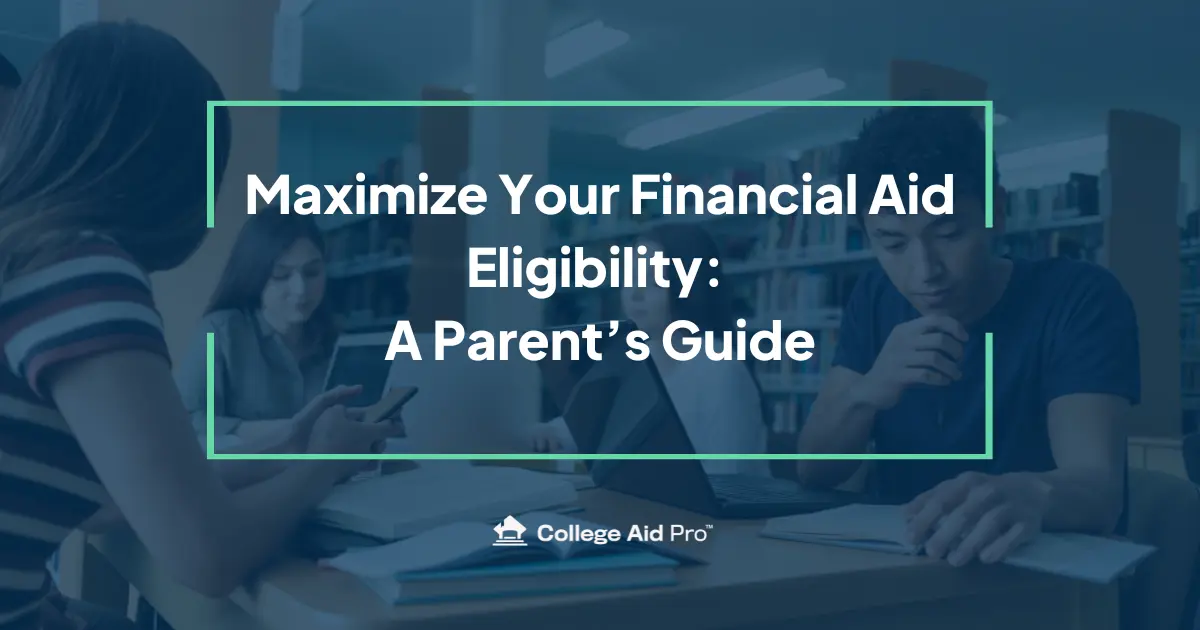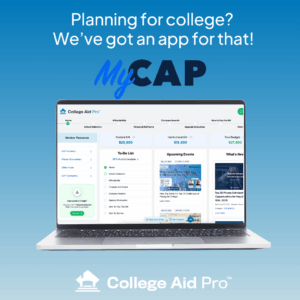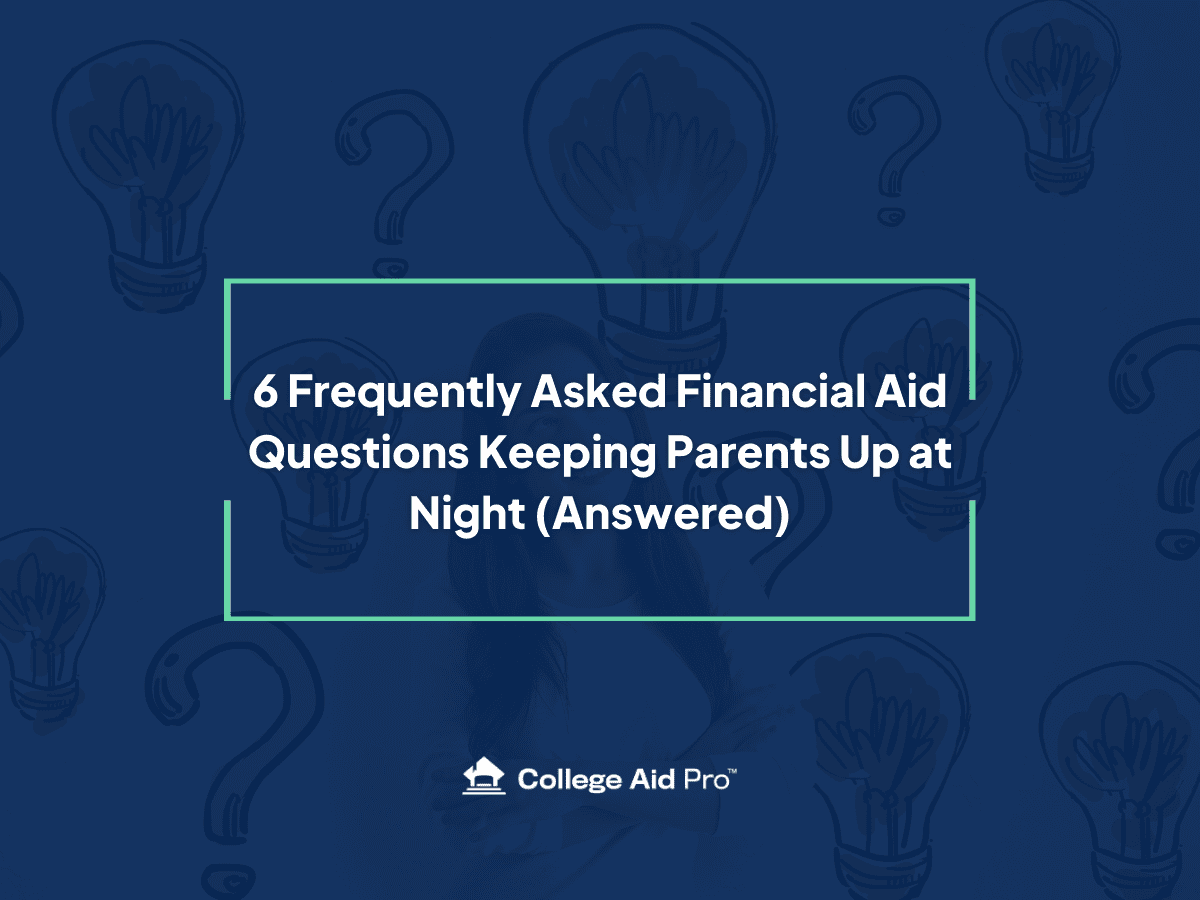 As a parent, you want the best for your child’s future, and higher education is often a significant part of that journey. However, navigating the college process can be overwhelming, especially when it comes to financing your child’s education.
As a parent, you want the best for your child’s future, and higher education is often a significant part of that journey. However, navigating the college process can be overwhelming, especially when it comes to financing your child’s education.
College price tags create the ultimate sticker shock for families these days. That’s where financial aid comes in. It plays a crucial role in making the investment in a college degree more affordable. But determining how much financial aid you can get can be a complex process. In this helpful guide, we’ll take a closer look at the key factors that can influence how much financial aid your child may be eligible to receive for college. Understanding the Basics
Understanding the Key Factors That Influence Your Financial Aid Eligibility & Student Aid Index (SAI)
Before diving into the world of financial aid, it’s essential to grasp the basics of college costs. The Cost of Attendance (COA) is the estimated cost of college for one year. This includes direct costs – items that will appear on the college bill and are paid directly to the school, and indirect costs – items not on your bill but are estimated costs associated with going to college and should be included in your budget. Direct costs include tuition and fees and on-campus housing. Indirect costs include books and supplies, transportation, and personal expenses.
Cost of attendance represents the full “sticker price” before any financial aid is factored in. It’s essential to be aware of the specific COA for the school you are interested in because it can vary significantly from one institution to another.
Student Aid Index (SAI) Formerly Expected Family Contribution (EFC)
Your Student Aid Index (SAI), formerly known as Expected Family Contribution (EFC), is a critical factor in determining your eligibility for need-based financial aid. The SAI is calculated using the information submitted on the Free Application for Federal Student Aid (FAFSA). It considers your family’s income, assets, and household size.
The SAI is an eligibility index number that financial aid offices use to determine how much federal student aid you would receive. It is NOT the total amount a student would pay.
The lower your SAI, the higher your eligibility for need-based aid. If your SAI is zero or below, you may qualify for more need-based programs like the Pell Grant, to cover the gap between your SAI and the cost of attendance at a particular school.
It’s worth noting that some colleges require additional financial aid applications, like the CSS Profile, or a school specific application. Colleges that require the CSS Profile use an Institutional Methodology to calculate your Student Aid Index (SAI), which can differ from the Federal Methodology used by the FAFSA. This variation could potentially lead to a higher index number.
The Institutional Methodology takes into account extra factors, including the primary residence’s home equity. Adding to the complexity, colleges using the CSS Profile may have varying approaches to evaluating home equity. If you own a home and your student is applying to CSS Profile colleges, it’s likely that your Student Aid Index (SAI) could fall within a range, ultimately affecting your eligibility for need-based aid.
This is one of the many reason why financial aid awards will vary based on the school.
Types of Financial Aid
Financial aid comes in various forms, including grants, scholarships, federal student loans, and work-study programs. Each type of aid has its own eligibility criteria and maximum award limits. Here’s an overview of the primary types of financial aid:
1. Grants
Grants are typically need-based and do not require repayment. The most well-known federal grant program is the Pell Grant, but many states and colleges also offer their own grant programs.
2. Scholarships
Scholarships can be merit-based or need-based and are awarded for academic achievements, talents, community involvement, and more. They come in a wide range of amounts, from a few hundred dollars to a full ride.
3. Federal Student Loans
Federal student loans are available to eligible students and their parents to cover educational expenses. The loan amount depends on factors like your child’s year in school, dependency status, and whether they are a dependent or independent student.
4. Work-Study Programs
Federal Work-Study provides part-time job opportunities to help students earn money for educational expenses. The amount your child can earn through work-study is limited by their financial need and the funds allocated by the school.

Merit-Based Aid
In addition to need-based aid, some colleges and universities offer merit-based scholarships. These awards are typically based on your child’s academic achievements, standardized test scores, extracurricular activities, and other accomplishments. The availability and amount of merit-based aid can vary widely from one institution to another.
Institutional Aid
Colleges and universities often have their own financial aid programs and scholarships. These can include need-based and merit-based awards. To maximize your child’s institutional aid, research the financial aid opportunities offered by the schools they are applying to and meet all application deadlines.
State Financial Aid
Many states offer financial aid programs to residents pursuing higher education within the state. These programs may include grants, scholarships, and loan forgiveness initiatives. Eligibility and award amounts are determined by state-specific criteria, so it’s essential to research the options available in your state.
Special Circumstances
Life can be unpredictable, and sometimes unexpected financial changes occur, such as job loss or significant medical expenses. In such cases, you can contact your child’s school’s financial aid office to discuss your situation. They may be able to adjust your child’s financial aid package to better meet their needs.
Timing Matters
Timing is crucial when it comes to applying for financial aid. The FAFSA, which is required for federal financial aid, will open some time in December this year. The CSS Profile opens October 1st. . However, some states and colleges have their own deadlines, so it’s vital to check and adhere to them. Applying early increases your child’s chances of receiving the maximum amount of aid available to them.
Dependency Status
Your child’s dependency status, as determined by the FAFSA, can significantly impact the amount of financial aid they can receive. Dependent students typically have their parents’ financial information considered when calculating aid eligibility. Independent students, on the other hand, are evaluated based on their own financial circumstances.
Appealing Financial Aid Offers
If your child is accepted to multiple schools, they will receive a financial aid letter from each school. No financial aid offer letter is the same! You will see that some schools offer more merit-based aid while some may offer more need-based aid, and some that may offer little to no aid. This may be a perfect opportunity to appeal your financial aid letter. We recommend appeals based on certain circumstances that you can read more about here.
You can also create a free MyCAP account here, upload your financial aid award letters and we’ll let you know if you received a “good” offer, or if there may be a good candidate for an appeal. Remember, not all appeals are successful, but you won’t know if you don’t try.
Navigating the Financial Aid Maze
Determining how much financial aid your child can get involves a complex interplay of factors, including the Cost of Attendance (COA), Student Aid Index (SAI), the types of financial aid available, and your family’s individual circumstances. As a parent, it’s essential to be proactive in researching your options, ensuring your child applies for aid early, and carefully reviewing your child’s financial aid offers.
Remember that financial aid is not a one-size-fits-all solution, and the amount your child receives can vary widely based on the factors discussed. By staying informed, exploring all available opportunities, and making informed decisions about financing your child’s education, you can maximize your child’s financial aid eligibility and make higher education more affordable.
Don’t leave aid on the table.
You’ve learned the formula; now it’s time to test the strategy. With MyCAP Premium, you get more than just a preview—you get a full toolkit:
- Instantly run your SAI to uncover your financial aid potential.
- Access crystal-clear, line-by-line FAFSA and CSS Profile tutorials.
- Join live expert office hours twice a month for personalized help and error-spotting.
Stop guessing and start planning. Take your FAFSA “test drive,” catch mistakes, and submit with confidence. Get started today for just $4.99/month—cancel anytime.




